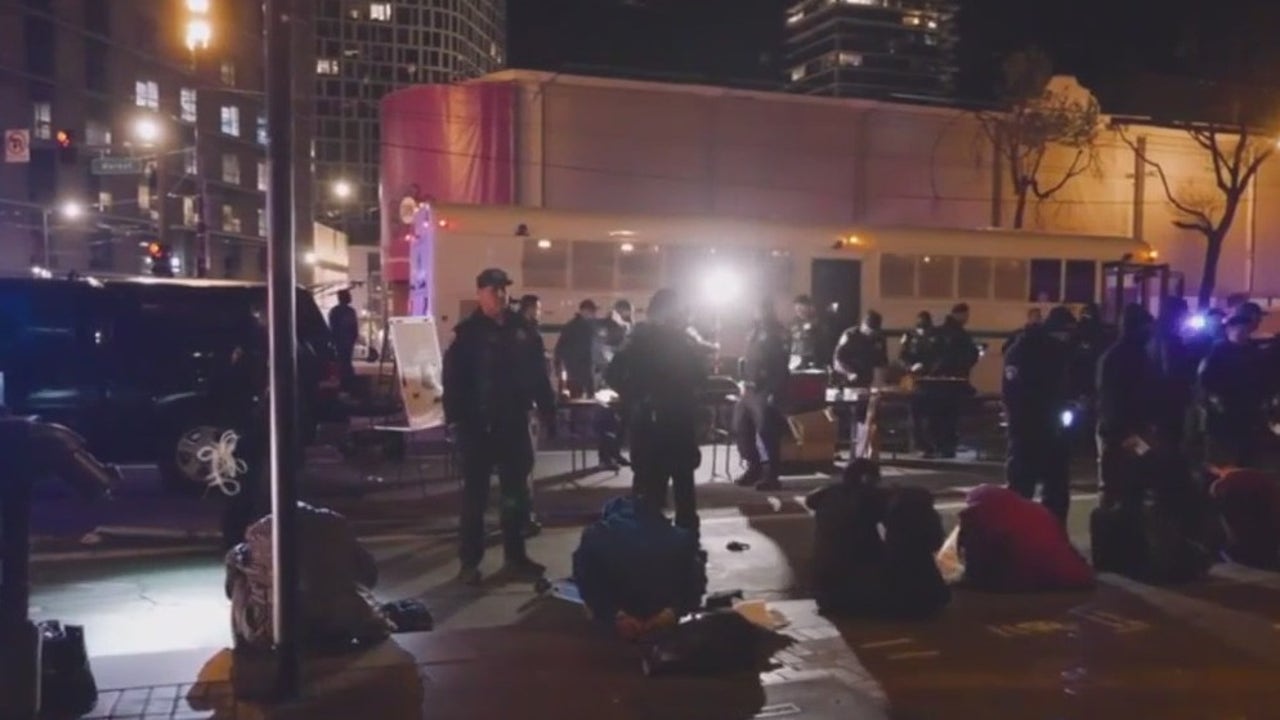California
Researchers identify a new pack of endangered gray wolves in California

Researchers identified a new pack of endangered gray wolves in Tulare County, California, the state Department of Fish and Wildlife announced Friday. The new pack was found in Central California’s Tulare County – about 200 miles from the nearest pack in Northern California.
After receiving reports of wolf sightings in Sequoia National Forest, researchers collected various samples, including hair and scat to be analyzed using genetic testing, the agency said. DNA confirmed that all samples were from gray wolves.
Michelle Harris/California Department of Fish and Wildlife
Gray wolves were once native to California, but had all but disappeared by the 1920s, wildlife officials said. The new pack consists of at least five wolves that have not previously been seen in the state. Most wolf packs have four to nine members.
About two million gray wolves once roamed North America, until a federal extermination program decimated the population, according to the Center for Biological Diversity.
Courtesy Samantha Winiecki-Love
The center estimates there are about 6,000 wolves are left in the U.S. In October 2020, the Trump administration stripped gray wolves of protections under the Endangered Species Act.
After being delisted, hunters in Wisconsin killed 218 wolves in February of 2021. In January of 2022, 20 gray wolves were killed by hunters when they roamed outside of Yellowstone National Park.
However, in February of 2022, a federal judge ruled that gray wolves should be re-added to the Endangered Species Act, about 16 months after they had been removed from the list.
— Alexandra Larkin contributed to this report.
Thanks for reading CBS NEWS.
Create your free account or log in
for more features.

California
Murder charges filed after second woman killed during conjugal visit in California state prison

The family of a woman who was strangled to death last year during a conjugal visit with her husband at a Northern California prison has called for reforms after a second woman was killed in a similar manner.
Tania Thomas, 47, was killed in July while visiting her husband, Anthony Curry, overnight at Mule Creek State Prison in Ione, according to Thomas’ cousin, Jeanine Rojo.
Curry was charged last week with murder in connection with Thomas’ death and is scheduled to be arraigned in April, court records show. Thomas had been strangled to death.
Tania Thomas, 47, was killed in July while visiting her husband, Anthony Curry, overnight at Mule Creek State Prison in Ione.
(Jeanine Rojo)
Thomas’ family hadn’t spoken out about her killing but decided to come forward after they saw Stephanie Brinson, 62, also killed in November while visiting husband David Brinson, 54, at the same prison.
Brinson hasn’t been charged in connection with his wife’s death. The investigation is ongoing.
Rojo called for more safety precautions for visitors during conjugal visits, including checking in on the meetings and better screening of who should be eligible to receive one.
“They definitely need to make urgent changes, because people’s lives are at stake here,” she said. “If they haven’t stopped these conjugal visits, they definitely have to stop that right now. Procedures need to change to make it safer.”
Thomas met Curry in 1999 and got pregnant, Rojo said. Curry disappeared with another woman when he found out Thomas was pregnant.
When Thomas was in labor, she saw Curry on the news because he was accused of shooting another woman, Synada Browning, in the head and dumping her body that same year. Browning survived the shooting but was blinded and left partially paralyzed. Curry, 48, was sentenced to 30 years to life in prison for attempted second-degree murder.
But Thomas reunited with Curry while he was behind bars and secretly married him without telling her family in 2023, Rojo said. She added that Curry was denied parole last year but had asked Thomas to “wait for him” before he killed her.
The California Department of Corrections and Rehabilitation did not respond to a request for comment.
Stephanie Brinson was visiting her husband, David Brinson, at the same prison on Nov. 13, according to the CDCR. Around 2 a.m., Brinson told officers that his wife had passed out. Officers attempted lifesaving measures but she was pronounced dead at 2:51 a.m.
Amador County Dist. Atty. Todd Riebe confirmed that Stephanie Brinson was killed during a conjugal visit. He said he hadn’t received the reports from Mule Creek to make a charging decision.
In 1994, Brinson was sentenced to four consecutive life terms without the possibility of parole for killing four men during a robbery at a Los Angeles apartment, The Times reported. He is currently incarcerated at the California Health Care Facility in Stockton.
Conjugal visits are intended to foster family connections, according to the corrections department. Inmates convicted of sex crimes, under disciplinary restrictions or on death row aren’t eligible for overnight visits.
Visits occur in apartment-like facilities in private and on prison grounds, according to the department. They last from 30 to 40 hours; inmates have to present themselves for a count four times in a 24-hour period.
California
Housing Legislation Aims to Snip Away at California’s Red Tape | KQED

California
Video shows harrowing moment hiker rescued from California cliffside: ‘Absolutely vertical’

Coast Guard rescues hiker ‘barely holding on’ to cliff after 100-foot fall
The US Coast Guard rescued two hikers in distress along California’s Lost Coast on March 22, one of whom had fallen down a 100-foot cliff.
A hiker who was “barely holding on” after a 100-foot fall from a northern California cliff was rescued in the nick of time, officials say.
Local agencies and a U.S. Coast Guard team in Humboldt County were called to stage the rescue of two hikers near the picturesque and popular Lost Coast Trail, a 25-mile along the California coastline over 200 miles north of San Francisco.
Rescue crews found the hikers along a steep cliff edge in the Big Flat Area, about 10 miles north of an area known as Shelter Cove, according to a news release from U.S. Coast Guard Sector Humboldt Bay.
One of the hikers who took a big fall clung to his hiking poles, about 60 feet above another unstable cliff, for dear life, the Coast Guard said.
“With no winds and limited power, the crew had to make quick decisions regarding fuel and patient delivery,” the agency said. “After jettisoning fuel and coming up with a plan to conduct 160-foot hoist, they were able to successfully extract the injured and bleeding patient from the cliff.”
Hiker’s companion was also rescued
After the dropping the injured hiker for emergency medical services, the Coast Guard returned to extract the hiker’s companion off a game trail.
“Both hoists required intense crew coordination due to the loose cliffside, dead trees, and limited power,” according to the Coast Guard. “The Shelter Cove Fire Ocean Rescue team provided crucial decisions and communication to make the evolution successful.”
Chief Nick Pape of the Shelter Cove Fire Department told SFGate that “below them was absolutely vertical, probably 60 feet to the boulders below.”
He told SFGate that the hikers were far off the designated Lost Coast Trail, popular among backpackers.
“They had no business being where they were,” he said.
The hiker who took the tumble suffered from a dislocated shoulder and unknown injuries that caused bleeding, while their companion was “cliffed out” but otherwise uninjured. Shelter Cove Fire Department did not immediately respond to USA TODAY’s request for a status update on the condition of the injured hiker on Thursday afternoon.
-

 News1 week ago
News1 week agoTrump Administration Ends Tracking of Kidnapped Ukrainian Children in Russia
-

 World1 week ago
World1 week agoCommission warns Alphabet and Apple they're breaking EU digital rules
-

 News1 week ago
News1 week agoZelenskyy says he plans to discuss Ukraine ceasefire violations in a call with Trump
-

 News1 week ago
News1 week agoTrump’s Ending of Hunter Biden’s Security Detail Raises Questions About Who Gets Protection
-

 Culture1 week ago
Culture1 week agoJack Draper’s tennis: How embracing variety took him to Indian Wells title
-

 Technology1 week ago
Technology1 week agoGoogle’s Pixel Tablet is $120 off ahead of Amazon’s spring sales event
-

 Technology1 week ago
Technology1 week agoStreaming services keep getting more expensive: all the latest price increases
-

 News1 week ago
News1 week agoNASA Astronauts Don’t Receive Overtime Pay for Space Mission But Get $5 a Day




















